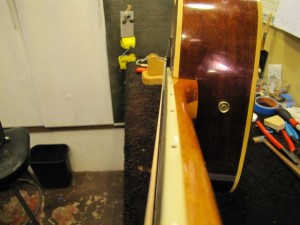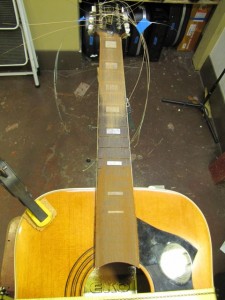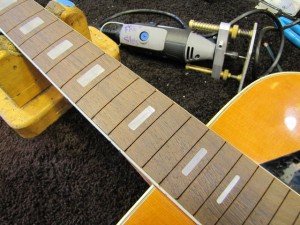Take a look at this neck – this one came in to us without frets, which gives us a good opportunity to show you what some bad necks look like. Click on the pics for a larger image:
If you look closely, you’ll see the incredible bow in the fretboard. We see many guitars with imperfections like this – the frets may all be at the same height, but if the board underneath them isn’t straight, then the frets will be uneven with each other and cause buzzing up and down the neck. Doing a fret level in most cases will compensate for slight undulations in the fretboard – but in the case of a refret we address the root of the problem by leveling the board itself.
We do this with the same method that we use to level frets. The guitar is set up on the neck jig, which simulates string tension on the neck without the strings installed, and then use a precision ground leveling beam to flatten out the board. You can see right away where the high spots are:
The level hit the ends of the neck, while clearing the middle completely. We keep sanding until the board is perfectly flat, then sand it again with a radius beam to set the fingerboard to it’s proper curvature. Then we prep the fret slots by clearing out all the debris, wood dust, and glue, and in some cases (like this one) we have to cut the fret slots to their proper width and depth with a dremel:
Only when the board is perfect is it ready for frets. We’ll publish more on the refretting process in a future post. Stay tuned!





